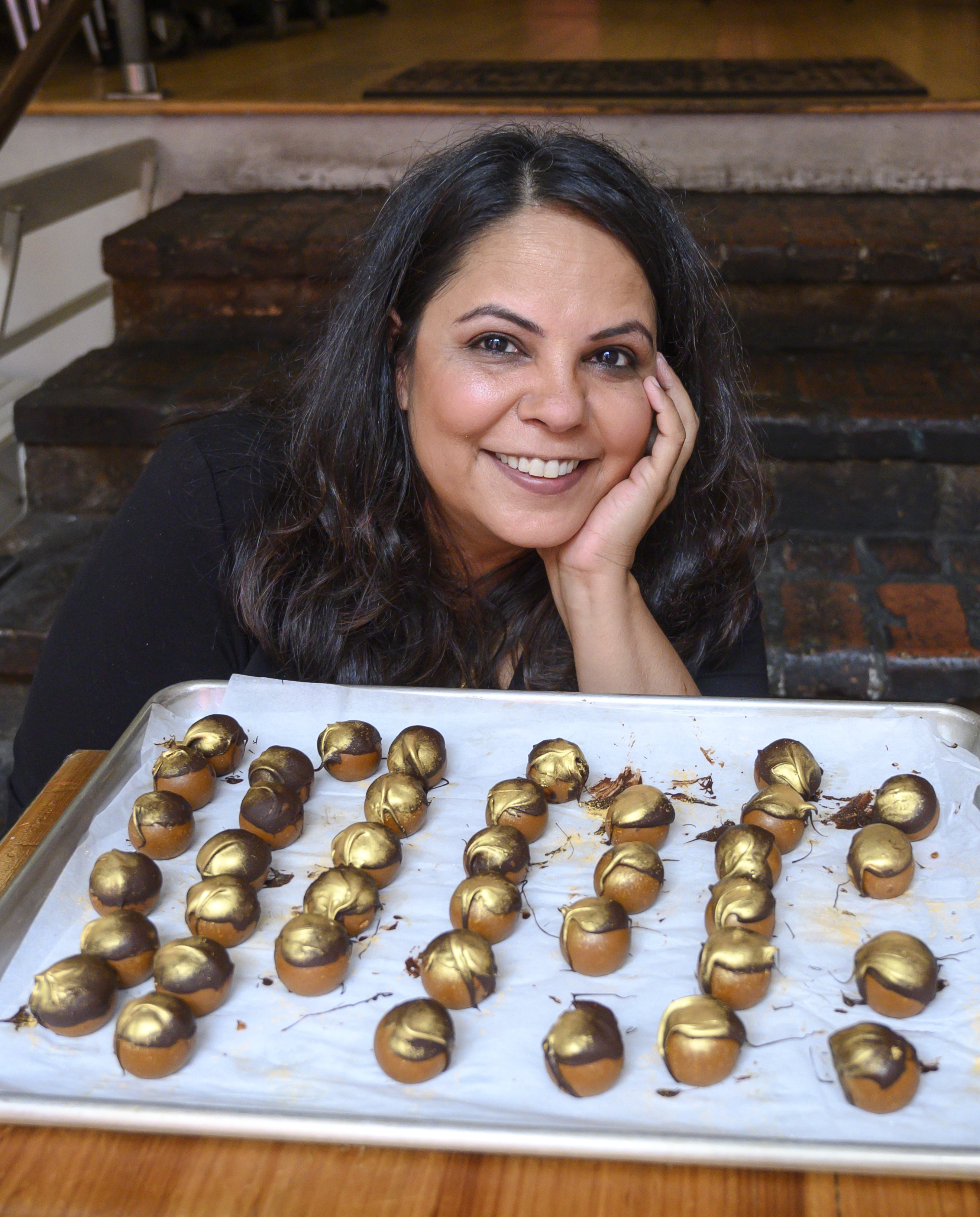Diwali Isn’t a Lavish Celebration for Everyone — But It Can Always Be Joyous
Growing up, Diwali reminded me of what I didn’t have. Today, it’s a time when I reflect on how far I’ve come.


LUCY SCHAEFFER PHOTOGRAPHY
Get the Recipe: Besan Ladoo
During the week of Diwali, the streets of New Delhi pulse with excitement. Rows of glowing lanterns swing playfully above people shopping at food stalls, where vendors stuff newspaper cones with crispy chaat and fry lacy swirls of batter with renewed zeal. After days of scrubbing and dusting, people open the doors of their homes for holiday parties, out-of-town guests and drop-in visits from neighbors bearing gifts. In the midst of all of these festivities, my childhood home was quiet — eerily void of the celebratory spirit that ushered in the Indian new year and the bounties that accompanied it: new clothes, elaborate meals and ornate sweets known as mithai in Hindi.
Our ancient culture of lavish gift-giving and epic feasts is, for so many households on the Indian subcontinent and here in the diaspora, at odds with their wallets. The economic pressure of the holiday is real, and in the midst of a global recession, I’m reminded of how people make do with what they have, holding onto joy despite the future’s uncertainty.
Growing up in a lower-middle class nuclear family, I saw how my parents bent the cultural norms to accommodate what we could afford. Instead of buying new clothes, my mother had old saris sewn into new dresses for me. Instead of hosting dinner parties, we prepared a special dish for our small family dinners. If we couldn’t afford store-bought mithai, we savored every bite of homemade kheer, a sweet rice pudding.
Diwali is famously a season of generosity, and it is customary to send neighbors and family members boxes of mithai, the South Asian equivalent of giving a box of chocolates. Although we couldn’t afford mithai boxes, we were lucky to receive them. I loved to peek underneath the lid of the mithai box to see what was inside: fudgy squares of pistachio burfi dyed grass green, slender diamonds of kaju katli fragrant with cardamom and topped with flakes of edible silver filigree and my favorite, the glittering gold domes of besan ladoo.
My mother would let us choose our favorite mithai to save for later. She would then arrange the rest of the sweets on a stainless steel plate covered with a pretty cloth and send me out to
share with the neighbors. As a young kid, I put on a happy face but was inwardly ashamed to deliver the regifted mithai. I wanted to be like my aunt and uncle, who bought bags of nuts and distributed them to different families every year. I dreamed of waltzing up to the doors of my friends with my arms full of gift boxes from the best mithai shops in New Delhi instead of the small steel plate in my hands. The neighbors accepted our mithai with gratitude, and always reciprocated by refilling the plate before sending it back. But it was bittersweet. It wasn’t just that money was tight, so was the tension of not being able to live up to the hype of the holiday. Joyful greetings were exchanged on the streets in our community, but at home the economic reality of not having enough morphed into a sullen feeling of resentment.
I grew up determined to make my own money, dreaming of a home where no one was worried about having enough. I had been cooking for others since I was eight years old, so it felt like a natural progression to become a chef. When I finished my bachelor’s degree in hospitality school, I applied to train under the mithaiwalas at my favorite mithai shops in New Delhi, but none would accept me. Why? Because I’m a woman and they had a “men only” kitchen policy. So, I pursued a career in the savory culinary arts before moving to the U.S. to earn a degree in food studies. Once here, I realized that I could use my knowledge as a savory and pastry chef to come up with my own mithai. I would blend traditional Indian confections with the Western pastries I was exposed to, employing the ingredients I had at my fingertips.
The irony is that now that I have the means to throw a Diwali party for my friends and family, I haven’t celebrated Diwali at home in over fifteen years. I own my own restaurant, TAGMO, in New York City and have a thriving mithai business. Fall is still our busiest season — and my workplace becomes like a surrogate home. This year, I've seen how the economic situation following the pandemic has altered the way people celebrate Diwali. Thoughtful gestures carry more value than showy displays. And we are all a bit more honest about our limitations — socially and financially. It’s not without stress, but this time is also filled with immense joy. I get to host family-style meals every night at my restaurant, and create my own mithai boxes that none would dare to regift.
Make Surbhi's Diwali Recipes
Dahi Bhalla
Dahi bhalla is a chaat (street food) popular in Delhi with versions all over South Asia. It’s creamy and filling with a kick of spice and a hint of crunch.
Related Links:


























